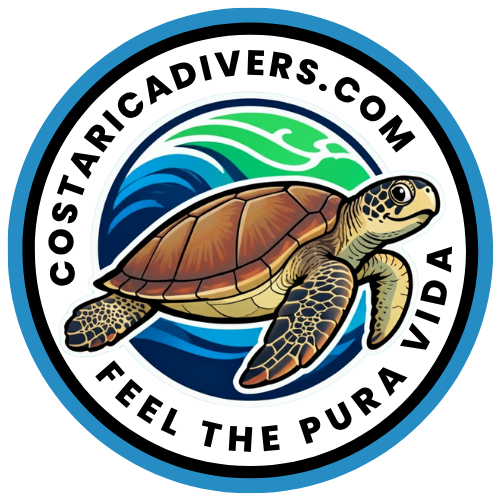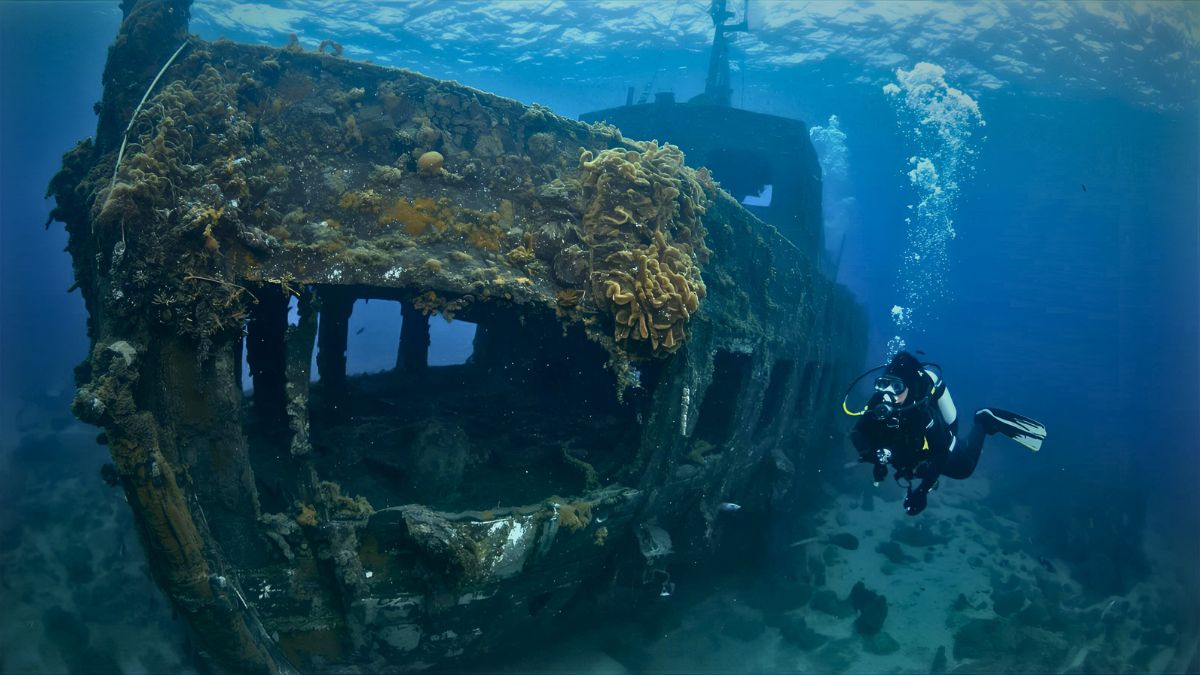The Osa Peninsula in Costa Rica is one of the most captivating and biodiverse regions in the world. Located on the southern Pacific coast, this remote paradise offers an immersive experience in nature that you simply won’t find anywhere else.
From exploring pristine rainforests teeming with exotic wildlife to diving in the crystal-clear waters of Isla del Cano, the Osa Peninsula delivers authentic adventure far from tourist crowds.
Whether you’re a solo traveler seeking wilderness, a family looking for eco-friendly activities, or a diving enthusiast chasing underwater wonders, this guide will help you plan the perfect Osa Peninsula adventure.
Why Visit the Osa Peninsula in Costa Rica?
Unmatched Biodiversity and Wildlife
Costa Rica’s Osa Peninsula is often described as the country’s last wild frontier. With over 700 square miles of protected land, this area is home to half of Costa Rica’s animal species and more than 2.5 percent of the world’s biodiversity. National Geographic once called it “the most biologically intense place on Earth,” and spending just a day here proves why.
The peninsula shelters jaguars, tapirs, all four species of Costa Rican monkeys, scarlet macaws, and over 400 bird species. You might spot a three-toed sloth hanging from a cecropia tree or watch squirrel monkeys leap through the canopy. The rainforests here feel primordial, unchanged for millennia, creating that rare sense of discovery that modern travel seldom offers.
Did you know? The Osa Peninsula contains 2.5 percent of the world’s biodiversity despite representing just 0.001 percent of Earth’s surface. Scientists estimate that one single tree here can host more ant species than all of the British Isles combined.
Remote Beauty Away from Tourist Crowds
Unlike popular destinations like Manuel Antonio or Tamarindo, the Osa Peninsula in Costa Rica remains remarkably undeveloped. You won’t find mega-resorts or crowded beaches here. Instead, you’ll discover secluded coves, jungle lodges accessible only by boat, and trails where you might be the only visitors for hours.
This remoteness is part of the appeal. The peninsula’s isolation has preserved its natural character, creating an authentic Costa Rican experience. You’ll wake to the howls of monkeys rather than alarm clocks, and fall asleep to the symphony of tree frogs instead of traffic noise.
Top Things to Do on the Osa Peninsula
Explore Corcovado National Park
Often called the “Amazon of Costa Rica,” Corcovado National Park stands as the crown jewel of the Osa Peninsula. This vast park covers 424 square kilometers of lowland rainforest and protects some of the most pristine tropical wilderness in Central America.
The park offers several entry points and ranger stations. Sirena Station, accessible by boat from Drake Bay or by hiking from La Leona, provides the best wildlife viewing opportunities. The trails around Sirena take you through dense jungle where tapirs feed near beaches and scarlet macaws nest in almond trees.

San Pedrillo Station, also reached from Drake Bay, features beautiful waterfalls and excellent birdwatching. The coastal trail between stations showcases the dramatic meeting of rainforest and ocean, with wildlife-rich beaches where you can spot crocodiles sunning themselves.
Corcovado Tour
All visitors must be accompanied by certified guides since 2014. This requirement might seem restrictive, but guides prove invaluable. They spot camouflaged sloths you’d walk past, identify bird calls, and ensure safe navigation through challenging terrain. A good tour operator makes all the difference in experiencing Corcovado’s magic.
Plan multi-day treks if you want to truly immerse yourself in the park. Overnight stays at ranger stations let you experience the jungle after dark, when a completely different cast of creatures emerges.
Go Scuba Diving and Snorkeling at Isla del Cano
Just a short boat ride from the Osa Peninsula, Isla del Cano offers some of Costa Rica’s finest underwater experiences. This marine reserve protects vibrant coral reefs and hosts an incredible diversity of marine life in waters that regularly exceed 20 meters of visibility.
When you dive here, you’ll glide through schools of jacks, spot green sea turtles grazing on algae, and watch white-tip reef sharks rest on sandy bottoms. Manta rays patrol the deeper waters, and during migration season (July to October and December to April), humpback whales pass through these waters.

One of the best diving spots in Costa Rica
The island features several world-class dive sites. Bajo del Diablo (Devil’s Rock) showcases dramatic underwater topography with swim-throughs and walls covered in colorful sponges. Paraiso lives up to its name with gentle currents perfect for newer divers, while experienced divers seek out the deeper pinnacles where larger pelagic species appear.
First-time divers can complete PADI certification courses through local dive centers in Uvita and Drake Bay. These courses typically take three to four days and include pool training before ocean dives. Even snorkelers enjoy exceptional experiences here, as much of the reef life thrives in shallow waters.
Fun Fact: Isla del Cano was once a sacred burial ground for indigenous peoples. Mysterious stone spheres, perfectly round and weighing several tons, still rest on the island, their purpose remaining unknown to this day.
Book diving tours well in advance, especially during whale season. The combination of diving and whale watching creates an unforgettable experience that draws visitors from around the world.
Kayak Through Golfo Dulce
Golfo Dulce, separating the Osa Peninsula from mainland Costa Rica, is one of only four tropical fjords in the world. These calm, protected waters provide perfect conditions for kayaking and paddleboarding, offering a peaceful way to experience the peninsula’s biodiversity from a different perspective.
Kayaking tours through Golfo Dulce often include mangrove forest exploration. You’ll paddle through narrow channels where herons stalk fish, sloths hang from overhanging branches, and crocodiles sun themselves on muddy banks. The silence of kayaking lets you approach wildlife without disturbing them, creating intimate encounters impossible from motorboats.
See sea creatures up close
Dolphin watching is common in these waters. Bottlenose dolphins frequently approach kayakers, sometimes playing in the wake of your paddle strokes. Sea turtles surface nearby, and if you’re incredibly lucky, you might spot a whale shark, the gentle giants that occasionally visit the gulf.
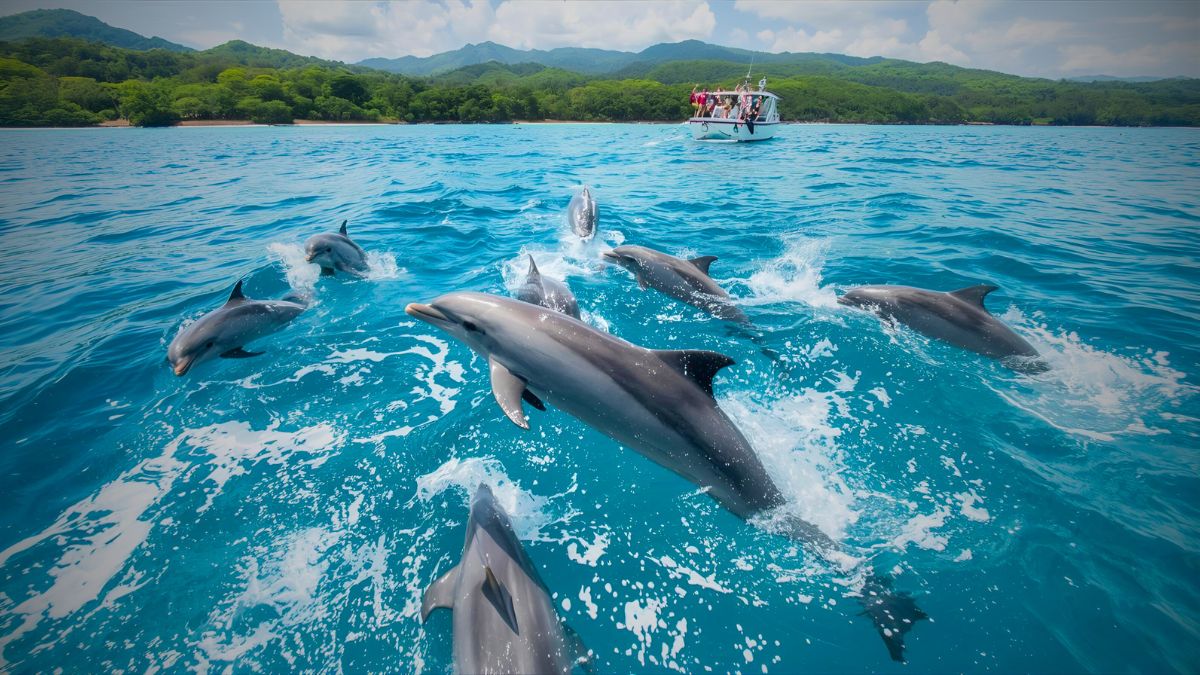
The calm waters make Golfo Dulce ideal for beginners and families. Most tours last three to four hours and include equipment, guides, and sometimes refreshments. Sunset paddles offer spectacular views as the sun dips behind the peninsula’s forested ridges.
Whale Watching in Drake Bay and Uvita
The waters around the Osa Peninsula in Costa Rica host one of nature’s most remarkable phenomena. Two different populations of humpback whales visit these waters to breed and give birth. Northern hemisphere whales arrive from December to April, while their southern hemisphere cousins appear from July to November.
This unique convergence means the Osa Peninsula offers year-round whale watching, with peak seasons providing almost guaranteed sightings. Watching a 40-ton humpback breach completely out of the water remains one of travel’s most awe-inspiring moments.

While technically just north of the Osa Peninsula, Uvita serves as an excellent base for whale watching tours. The town sits within Marino Ballena National Park, named specifically for the whales that frequent these waters. The park’s famous Whale Tail beach formation, a natural sandbar shaped like a whale’s tail visible at low tide, adds visual charm to an already remarkable area.
The best place for whale watching
Drake Bay also offers excellent whale watching opportunities, often combined with trips to Corcovado or Isla del Cano. Tour operators use experienced captains who understand whale behavior, positioning boats respectfully to observe without disturbing these magnificent creatures.
Tours typically last three to four hours and often include dolphin sightings as a bonus. Bring sunscreen, a hat, and your camera with a zoom lens to capture these unforgettable encounters.
Take a Night Hike in the Rainforest
The Osa Peninsula transforms completely after sunset. Creatures that hide during daylight emerge, filling the jungle with sounds and activity invisible to daytime visitors. A guided night hike reveals this hidden world, offering wildlife encounters unlike anything you’ll experience during the day.
Red-eyed tree frogs, with their electric green bodies and brilliant crimson eyes, pose on leaves. Kinkajous, nocturnal relatives of raccoons, feed on fruit in the canopy. Sleeping birds sit exposed on branches, and if you’re fortunate, you might spot a sloth feeding or moving between trees.
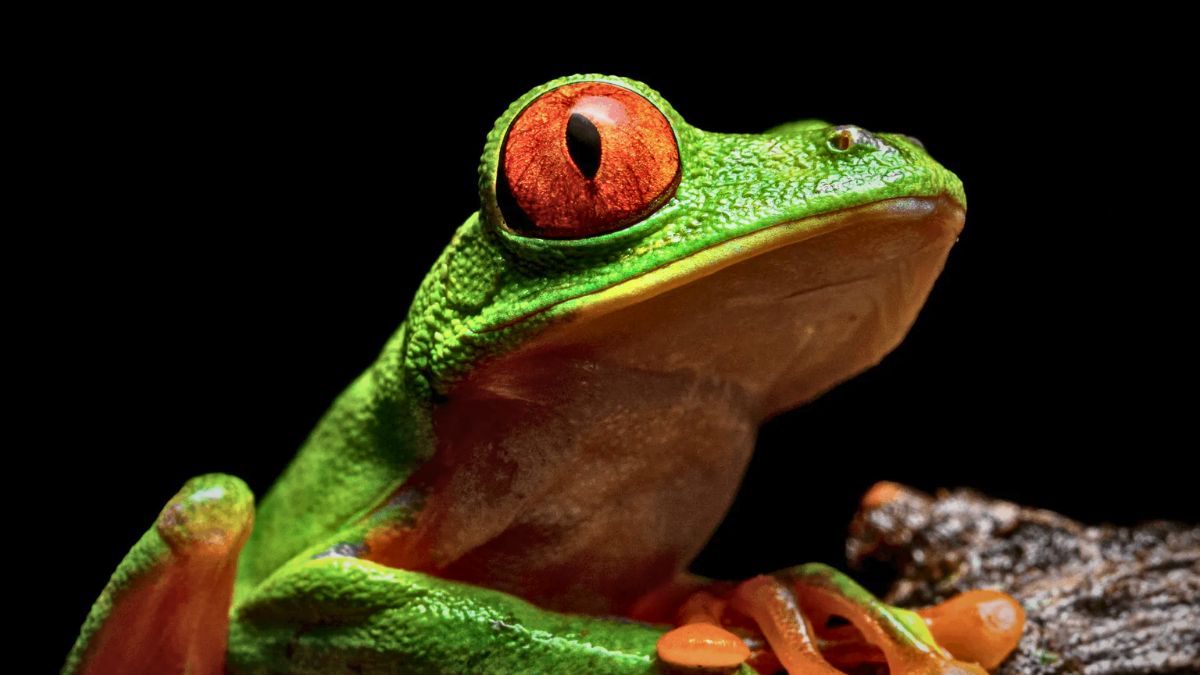
Expert guides use flashlights to spot the eyeshine of spiders, frogs, and other creatures. They’ll identify the various calls echoing through the darkness and show you insects that glow with bioluminescence. The sensory experience of standing in complete jungle darkness, surrounded by life, creates memories that last a lifetime.
Night hikes typically last two to three hours and don’t require extensive fitness. Sturdy shoes, insect repellent, and rain gear are essential. The absence of light pollution on the Osa Peninsula means clear nights offer spectacular stargazing opportunities after your hike.
Surf at Playa Matapalo
Cabo Matapalo, at the southern tip of the Osa Peninsula, offers excellent surf breaks for various skill levels. The remote location means uncrowded waves, even during peak season. Palm-fringed beaches and jungle-covered headlands create a stunning backdrop for your surf sessions.
Playa Matapalo features several breaks. Pan Dulce offers powerful barrels for experienced surfers, while Backwash provides mellower waves suitable for intermediates. The beaches here feel wild and untouched, with scarlet macaws flying overhead and monkeys watching from the trees.
Several surf camps and yoga retreats in Matapalo cater specifically to wave riders. These typically offer accommodation, meals, and surf instruction in intimate settings. The combination of great waves, incredible wildlife, and pristine natural beauty makes Matapalo a favorite among surfers seeking authentic Costa Rican experiences.
Did you know? The Golfo Dulce is one of the few places in the world where both northern and southern hemisphere humpback whales come to breed and give birth, making it a year-round whale watching destination.
Where to Stay on the Osa Peninsula
Drake Bay Accommodations
Drake Bay sits on the northwestern coast of the Osa Peninsula, accessible primarily by boat or small plane. This isolation has preserved its wild character while still offering comfortable lodging options.
Eco-lodges dominate Drake Bay accommodations. These range from basic but charming jungle bungalows to upscale resorts offering gourmet meals and spa services. Most lodges include meals in their rates, eliminating the need to search for restaurants. Many operate on solar power and implement water conservation practices, aligning with the peninsula’s conservation ethos.
Lodges here typically offer package deals including accommodation, meals, and tours. This all-inclusive approach simplifies planning and often provides better value than booking components separately. Beachfront properties offer stunning ocean views and easy beach access, while jungle lodges immerse you in rainforest sounds and wildlife.
Budget travelers will find hostels and basic guesthouses in Drake Bay village itself. These provide more flexibility for independent travelers who prefer to book tours separately and eat at local sodas.
Puerto Jimenez Area Lodges
Puerto Jimenez, the largest town on the Osa Peninsula, sits on the eastern shore along Golfo Dulce. Unlike Drake Bay, Puerto Jimenez is accessible by paved road, making it easier to reach by car.
The town itself offers hotels, hostels, and vacation rentals at various price points. You’ll find supermarkets, restaurants, pharmacies, and banks here, providing conveniences unavailable in more remote areas. This makes Puerto Jimenez an excellent base for budget travelers or those preferring a more independent travel style.
Outside town, several high-end eco-lodges nestle along the coast and in the surrounding hills. These offer similar amenities to Drake Bay properties but with easier access. Some provide private trails through rainforest reserves on their properties, offering excellent wildlife viewing without leaving your lodge.
Puerto Jimenez serves as the main access point for entering Corcovado National Park via La Leona or Los Patos ranger stations. Staying here puts you closest to these entry points.
Cabo Matapalo Eco-Lodges
Between Puerto Jimenez and Carate, Cabo Matapalo features some of Costa Rica’s most exclusive eco-lodges. These properties sit on vast private reserves, offering luxury amenities while maintaining strong environmental commitments.
Accommodations here typically include spacious bungalows or villas with ocean or jungle views. Infinity pools overlook the Pacific, gourmet restaurants serve farm-to-table cuisine, and extensive trail systems let you explore private rainforest. Many properties include naturalist-guided hikes as part of their packages.
This area suits travelers seeking comfort and seclusion. You’ll enjoy world-class accommodations while remaining immersed in wilderness. Wildlife viewing directly from your lodge often rivals that in national parks.
The road to Cabo Matapalo can be challenging, especially during rainy season. Four-wheel drive vehicles are strongly recommended if driving, though lodges typically arrange transportation from Puerto Jimenez.
How to Get to the Osa Peninsula
Flying to Puerto Jimenez or Drake Bay
Flying offers the quickest and most convenient way to reach the Osa Peninsula in Costa Rica. Both Puerto Jimenez and Drake Bay have small regional airports served by domestic carriers from San Jose.
Sansa and Green Airways operate daily flights from Juan Santamaria International Airport in San Jose. These flights take approximately 50 minutes and offer spectacular aerial views of mountains, coastline, and rainforest. Flights typically cost between 80 and 150 dollars each way depending on season and booking timing.
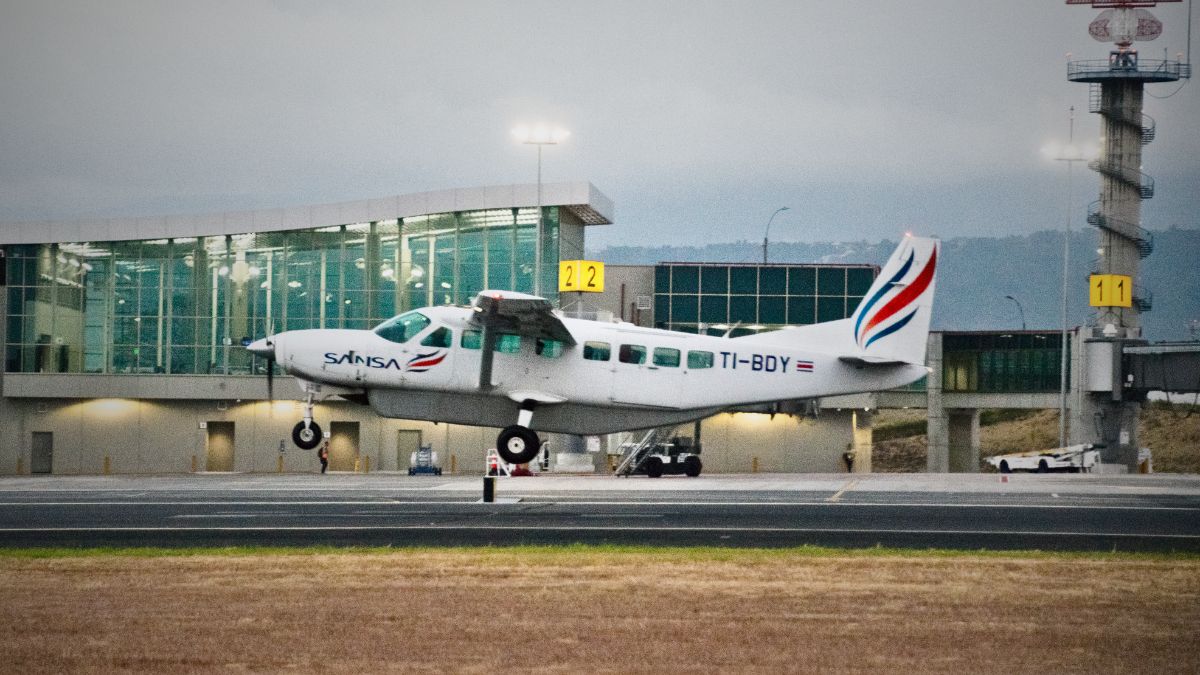
Small planes hold 12 to 20 passengers and have strict weight limits for luggage. Most carriers allow one checked bag up to 25 pounds and one small carry-on. Pack light and flexible bags rather than hard-sided suitcases.
Book flights well in advance during high season (December through April) as seats fill quickly. Morning flights often provide better weather and views compared to afternoon departures.
Driving from San Jose
Driving to Puerto Jimenez from San Jose takes approximately six hours via paved roads. The route follows the Costanera Sur highway along the Pacific coast through Jaco, Quepos, and Uvita before turning inland toward Puerto Jimenez.
The final stretch from Chacarita to Puerto Jimenez remains fully paved and accessible to regular vehicles year-round. However, roads to Drake Bay, Cabo Matapalo, and Carate are unpaved and require four-wheel drive vehicles, especially during rainy season.
Driving offers flexibility to explore at your own pace and reach accommodations outside town centers. Car rental companies in San Jose offer four-wheel drive SUVs, though these cost more than standard vehicles. Book early for best rates and vehicle selection.
Consider breaking the drive with an overnight stop in Manuel Antonio, Uvita, or Dominical. This makes the journey more enjoyable and lets you explore additional destinations.
Taking the Sierpe River Boat to Drake Bay
Reaching Drake Bay via boat from Sierpe provides an adventure in itself. The journey takes you through the Sierpe-Terraba mangrove system, one of Central America’s largest wetlands, before emerging into open ocean for the final leg to Drake Bay.
Boats depart Sierpe around high tide, typically mid-morning and early afternoon. The trip takes approximately one and a half hours and costs around 20 to 30 dollars per person. Most lodges arrange boat transfers for their guests, coordinating pickup times with your arrival schedule.
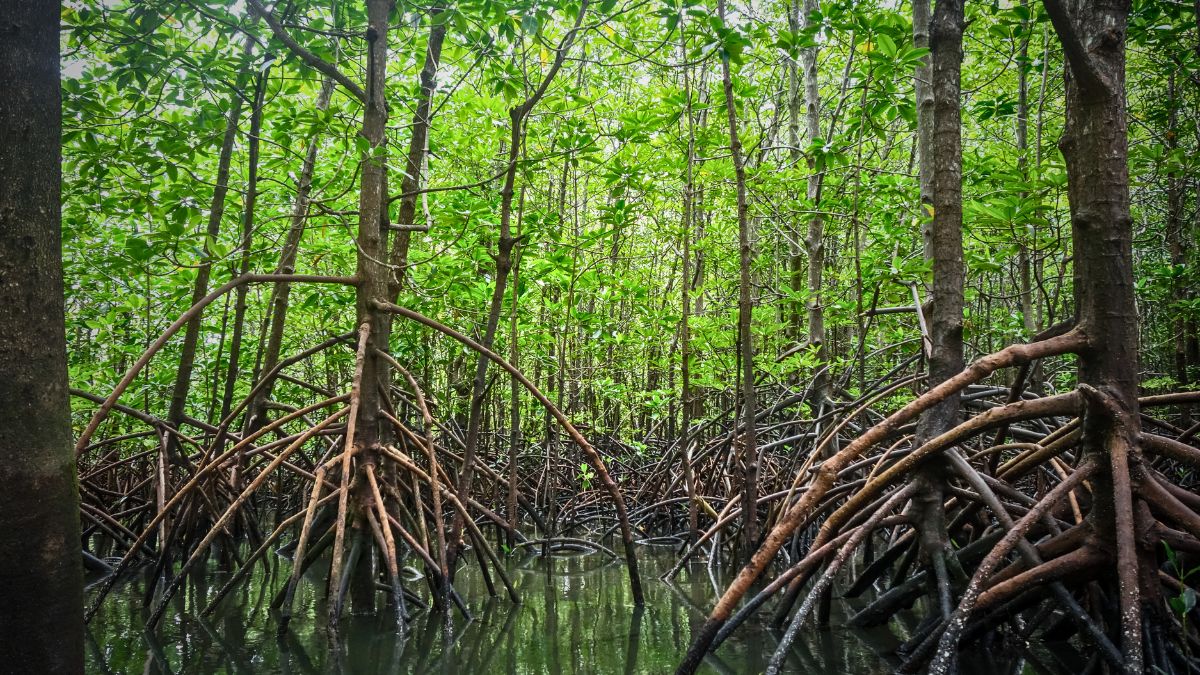
The mangrove passage offers excellent wildlife viewing. You’ll spot herons, egrets, crocodiles, and possibly caimans along the riverbanks. The boat ride through narrow channels feels like entering another world, building anticipation for your Osa Peninsula adventure.
If driving to the peninsula, you can leave your vehicle in secure parking in Sierpe for about six dollars per day. This eliminates the need to navigate challenging roads to Drake Bay while still having transportation flexibility for your return journey.
Best Time to Visit the Osa Peninsula
Dry Season (December to April)
The dry season represents peak tourism season on the Osa Peninsula in Costa Rica. From mid-December through April, rainfall decreases significantly, humidity drops slightly, and sunny days become more consistent.
This weather creates ideal conditions for hiking in Corcovado National Park, as trails are less muddy and river crossings are lower. Beach activities, kayaking, and outdoor exploration become more predictable when rain is less likely to interrupt your plans.
Diving visibility typically peaks during dry season, often exceeding 25 meters at Isla del Cano. Calmer seas make boat trips more comfortable and diving conditions more pleasant for all skill levels.
However, dry season brings higher prices and more visitors. Accommodations and tours book months in advance, especially during Christmas and Easter weeks when prices spike even higher. Make reservations early if planning to visit during these peak periods.
Despite being called dry season, remember this is still rainforest. Short afternoon showers can occur even during the driest months. The forest remains lush and green year-round.
Rainy Season (May to November) and Whale Watching
Rainy season, also called green season, transforms the Osa Peninsula into an even lusher paradise. From May through November, afternoon rains refresh the landscape daily, waterfalls swell to their most impressive volumes, and the rainforest pulses with life.
September and October typically see the heaviest rainfall, with all-day downpours possible. Some lodges close during these months, and certain roads become impassable. However, June through August and November offer excellent conditions with morning sunshine and afternoon showers that are easy to plan around.
Every season in Costa Rica has its advantages
The major advantage of rainy season is whale watching. Southern hemisphere humpback whales visit from July through November, with August and September offering peak viewing opportunities. Watching these giants breach against stormy skies creates dramatic photo opportunities.
Prices drop significantly during green season, often 20 to 40 percent lower than peak season rates. Fewer visitors mean more intimate experiences and easier booking. Wildlife viewing can actually improve as animals congregate around water sources and food becomes more abundant.
Pack good rain gear, quick-dry clothing, and waterproof bags for electronics. Embrace the rain as part of the experience rather than fighting against it, and you’ll discover why many seasoned travelers prefer visiting during green season.
Practical Tips for Visiting the Osa Peninsula
What to pack for a trip to the Osa Peninsula
Lightweight, quick-dry clothing is essential in this humid climate. Bring sturdy hiking shoes with good tread, waterproof rain jacket, sun protection (hat, sunglasses, reef-safe sunscreen), insect repellent, reusable water bottle, headlamp for night activities, and dry bags for protecting electronics and documents.
Health Considerations
No special vaccinations are required for the Osa Peninsula, though being current on routine vaccinations is recommended. Bring any prescription medications in original containers with extra supply. Basic medical facilities exist in Puerto Jimenez, but serious medical situations require evacuation to larger cities.
Money and Banking
Puerto Jimenez has ATMs and banks, but Drake Bay has limited banking services. Bring sufficient cash in colones for smaller purchases, tips, and emergencies. Many lodges and tour operators accept credit cards, but confirm payment options when booking.
Communication
Cell phone coverage is spotty outside Puerto Jimenez. Many remote lodges have limited or no WiFi. Embrace this digital detox as part of your wilderness experience, but inform family and friends that communication may be limited.

Road Conditions
If driving, seriously consider four-wheel drive, especially during rainy season. Roads to Cabo Matapalo and Carate include river crossings and rough sections that challenge even experienced drivers. Check current conditions with your accommodation before attempting these routes.
Booking Timeline
Reserve accommodations and tours three to six months ahead for high season travel. Green season allows more flexibility, but popular lodges and activities still book up, especially on weekends.
Frequently Asked Questions
How many days should I spend on the Osa Peninsula?
Plan at least four to five days to experience the peninsula’s highlights properly. This allows time for a Corcovado day trip, diving or snorkeling at Isla del Cano, kayaking in Golfo Dulce, and relaxing at your lodge. A week lets you explore more thoroughly and include additional activities like night hikes, whale watching, or multiple Corcovado visits.
Is the Osa Peninsula safe for travelers?
Yes, the Osa Peninsula is generally very safe. The main concerns are natural hazards rather than crime. Follow guide instructions in Corcovado, respect wildlife by maintaining distance, watch for slippery trails during rain, and use caution if driving rough roads. Standard travel precautions apply regarding valuables and situational awareness.
Can I visit Corcovado National Park without a guide?
No, all visitors must be accompanied by certified guides since 2014. This regulation protects both visitors and the park’s fragile ecosystems. Guides significantly enhance your experience through wildlife spotting expertise, safety knowledge, and educational interpretation.
What wildlife will I see on the Osa Peninsula?
Wildlife sightings vary, but commonly observed species include white-faced capuchin monkeys, howler monkeys, spider monkeys, scarlet macaws, toucans, sloths, coatis, various reptiles, and countless bird species. With luck and expert guides, you might spot tapirs, jaguars, ocelots, or harpy eagles, though these remain rare sightings even in Corcovado.
Do I need diving certification for Isla del Cano?
Certification is required for scuba diving, but snorkeling requires no special training. If you’re not certified, you can complete a PADI Open Water course through local dive centers before your Cano Island trip, or simply snorkel, which still provides excellent marine life viewing opportunities.
What’s better for families, Drake Bay or Puerto Jimenez?
Puerto Jimenez offers more flexibility and easier access with paved roads, more dining options, and varied accommodation prices. Drake Bay provides a more immersive wilderness experience but requires boat or plane access and has fewer budget options. Both areas offer family-friendly activities, though Puerto Jimenez might be easier for families with young children.
How much does it cost to visit the Osa Peninsula?
Budget travelers can manage on 50 to 75 dollars per day staying in hostels, eating at local restaurants, and limiting tours. Mid-range travelers should budget 150 to 250 dollars daily for comfortable lodging, meals, and regular tours. Luxury eco-lodges with all-inclusive packages range from 300 to 600+ dollars per person per night.
Ready to Explore Costa Rica?
Getting here is just the beginning of your South Pacific adventure. Once you arrive, you’ll discover why this coastline remains one of Costa Rica’s most authentic and beautiful destinations.
Need help planning your Osa Peninsula trip beyond transportation? Check out these resources:
Essential Guides:
- How to Get to Corcovado National Park
- Where to Buy Corcovado Tickets
- Best Time to Visit Corcovado
- Where to Stay Near Corcovado
- Travel Insurance for Costa rica
Activities & Adventures:
- Scuba Diving at Isla del Caño
- Golfo Dulce Diving: Unexplored Southern Treasures
- Best Scuba Diving Spots in Costa Rica
- Best Snorkeling Spots in Costa Rica
- Isla del Caño Snorkeling
- Whale Watching in Uvita – Season and tours
- Marino Ballena National Park – Complete guide
Sources and References
This guide incorporates information from multiple authoritative sources on Osa Peninsula and Costa Rican conservation:
- National Geographic – Biodiversity research and Corcovado significance
- Sistema Nacional de Áreas de Conservación – Official national parks information
- Osa Conservation – Research on Osa Peninsula wildlife and ecosystems
